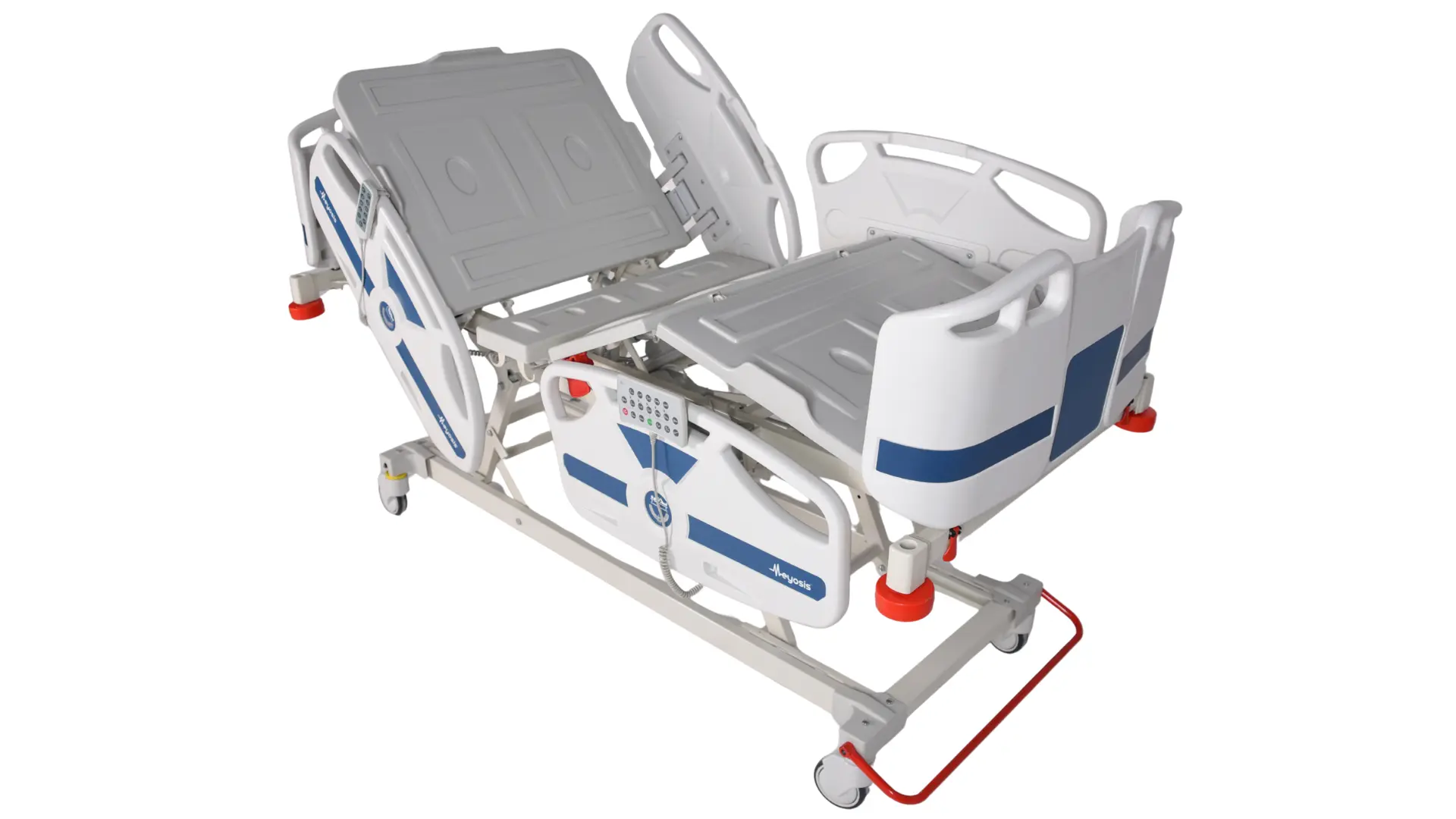Introduction: The Role of Electric Beds in Modern Healthcare
Patient care today requires more than basic functionality—it requires comfort, safety, and advanced technology. While manual beds served healthcare institutions for decades, the shift towards electric hospital beds has transformed the way patients are treated and caregivers work.
With remote-controlled motorized systems, electric beds make it possible to adjust head, leg, height, and even advanced Trendelenburg positions effortlessly. This not only improves the patient’s recovery process but also reduces the physical strain on healthcare workers.
???? Explore the full range of options here: Electric Hospital Beds
Key Features of Electric Hospital Beds
1. Motor Systems
The number of motors determines how versatile the bed is:
- 2-Motor Electric Beds – Head and leg adjustment.
- 3-Motor Electric Beds – Adds height adjustment.
- 5-Motor Electric Beds – Includes Trendelenburg and Reverse Trendelenburg.
Details: 5-Motor Hospital Bed Guide
Ease of Use
Remote or side panel controls make adjustments simple for both patients and caregivers.
3. Safety Standards
- Side rails for patient protection
- Central brake system
- Antibacterial surfaces for infection control
(See also: ICU Beds)
Durability & Hygiene
Steel frames, ABS tops, and easy-to-clean surfaces guarantee long-term use and hospital-level hygiene.
Advantages of Electric Beds
For Patients
- Multiple positioning for comfort
- Pressure ulcer prevention
- Improved respiratory and circulatory support
- Independence via self-adjustable controls
For Caregivers
- Ergonomic working height reduces strain
- Emergency one-touch CPR position
- Compatibility with medical equipment
- Saves time and energy during daily care
Where Are Electric Beds Used?
- Hospitals: Wards, operating rooms, recovery units.
- Clinics: For mid-level treatment and observation.
- Nursing Homes: Long-term comfort for elderly patients.
- Rehabilitation Centers: For patients with mobility limitations.
Discover more: Electric Hospital Beds
Manual vs. Electric Hospital Beds
| Feature | Manual Bed | Electric Bed |
|---|---|---|
| Position Adjustment | Manual crank, limited | Remote, multi-function |
| Ease of Use | Requires effort | Effortless control |
| Patient Comfort | Basic | Maximum |
| Safety Features | Minimal | Rails, brakes, hygiene |
| ICU Compatibility | Low | High |
The Role of Electric Beds in ICUs
In Intensive Care Units, electric beds—especially 5-motor models—are indispensable. Patients require constant repositioning to prevent complications, improve circulation, and support breathing.
Functions such as Trendelenburg positioning make these beds critical in shock therapy and post-operative care.
Read more: ICU Beds
Innovation and Technology
Today’s electric hospital beds integrate modern technologies such as:
- Digital remote controls
- Smart sensors
- Antibacterial coatings
- Compatibility with monitoring devices
These features help build the hospital rooms of the future.
Frequently Asked Questions (FAQ)
1. What is the difference between an electric and a manual hospital bed?
Electric beds use motorized systems for easy adjustments, while manual beds require physical effort.
2. Who needs a 5-motor hospital bed?
Patients in critical care, ICUs, or those requiring long-term recovery.
3. Are Meyosis beds certified for export?
Yes. All products are CE-certified and manufactured according to ISO standards.
4. How are prices determined?
Based on motor functions, accessories, and safety features.
Conclusion: Next-Generation Electric Beds for Modern Care
Electric hospital beds are no longer optional—they are essential for modern patient care. By improving both patient comfort and caregiver efficiency, they redefine healthcare standards.
Meyosis continues to provide electric hospital beds and ICU beds that combine comfort, safety, and technology for hospitals worldwide.
